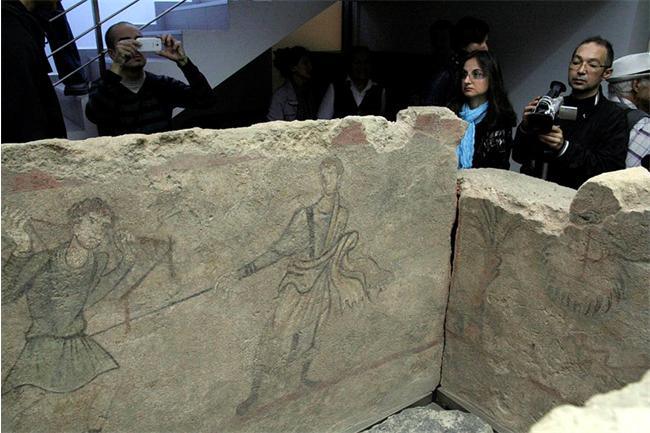The tomb was discovered in 2012 in downtown Plovdiv, Bulgaria, buried next to gas and sewer lines and a water supply. Dating from the fourth century, its artwork depicts two of Christ’s miracles – the healing of the paralyzed man and the raising of Lazarus from the dead. It has been restored and made open to the public at the Plovdiv Museum of Archaeology:
The archaeologists have concluded that the Early Christian Late Roman tomb was part of the southern necropolis of Philipopolis, the richest necropolis in Plovdiv (which according to one ranking is the oldest city in Europe, and one of the 10 oldest cities in the world).
An intact tomb with murals is a rare thing; it’s the only such tomb found in Bulgaria so far and the earliest depiction of Christ found in Bulgaria so far. The miracle depictions are on the long sides of the 2-meter-long tomb:
The shorter sides also feature Early Christian symbols. One of them shows two peacocks with a kantharos (cantharus), an ancient deep bowl with two handles.
According to the experts, the image of the kantharos with the peacocks symbolizes the source of life and/or faith in resurrection and eternal life in Christianity. A similar depiction can be seen in one of Plovdiv’s Early Christian basilicas.
The other side depicts a christogram (a Christian symbol consisting of a monogram of letters standing for the name of Jesus Christ) shown between two palm trees together with the Ancient Greek letters alpha and omega which stand for the word of God.
The full story can be found at the Archaeology in Bulgaria site.

